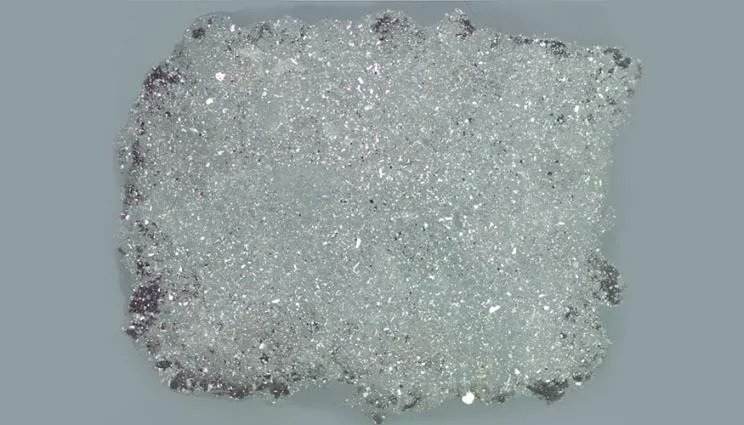When Huyabusa2 returned a sample of Ryugu, a Near Earth Asteroid, to Earth in December 2020, it was sure to light a bonfire of material science research. We’re starting to see the beginning of that, and a new study led by a scientist at Lawrence Livermore National Laboratory has found a particular grain in the sample Huyabusa2 collected that shows how the asteroid formed. The entire Huyabusa2 mission was predicated on the idea that if humanity truly wants to understand what an asteroid is made up of, it needs to bring a sample of that asteroid back to where it can be poked and prodded by the advanced scientific instruments we have at our disposal back on Earth.
Hence, the reason for the world’s first asteroid sample return mission. One of those advanced scientific instruments is an ion mass spectrometer, which partially vaporizes a sample and then analyzes the different ion types released from those vapors. An international team got a chance to use one of the world’s most advanced ones on a sample from Ryugu.
Video discussing the origins of Ryugu being discovered from the Hayabusa mission. Credit – Anton Petrov YouTube Channel Ryugu itself is derived from an earlier, larger asteroid that was formed around the same time as the solar system. Some cataclysmic event eons ago broke off the piece that is today thought of as an asteroid, but some of its constituent parts are still from that primordial soup of the early solar system.
Samples from Huyabusa2 offer a unique look into that world – the closest we’ve come to directly sampling it before was through meteorites, which have obviously been through some dramatic events that could have changed their chemistries. Ryugu’s material is much more indicative of the early material scientists would expect to see during the solar system’s formation. What they found in that sample surprised them – there were anhydrous silicates, a type of rock that contains no water.
This contrasts with other types of silicates that were subjected to a prolonged period of exposure to water. The particular grain this was found in, known as C0009, only contained about . 5% of its volume as the anhydrous silicates, but that was enough to pique that investigator’s interest.
Soil Samples returned by the Hayabusa2 Spacecraft Credit – JAXA That interest was directed at similarities between the grain C0009 and other “high-temperature components” of a rare type of asteroid called non-CI chondrite carbonaceous chondrites. Ryugu itself is a B-type, a specific type of the more common C-type asteroids, which has a slightly blue hue when viewed from far away. This discovery helps place Ryugu more solidly among the different classifications of asteroids and points to a better understanding of the early solar system awaiting more regular visits to other asteroids.
As space exploration enters a new commercial phase, and one of the primary commercial ends is utilizing asteroid resources to build the space infrastructure necessary to expand, there are sure to be more missions to asteroids that will collect more samples. It remains to be seen how many will be subjected to a fully mass spectrometer, though. Learn More:LLNL – Team identifies parent body materials in Ryugu asteroidUT – Samples From Asteroid Ryugu Contain Bits That Came From Outside the Solar SystemUT – Asteroid Ryugu Might Actually Be a Dead CometUT – Samples of Asteroid Ryugu Contain More Than 20 Amino Acids Lead Image:Part of the asteroid Ryugu that was returned to Earth as part of the Hyabusa2 missions.
Credit – A. Yamaguchi / NPIR The post Thanks to Hayabusa 2’s Samples, Scientists can Track the History of Ryugu Earlier in the History of the Solar System appeared first on Universe Today. .
From: universetoday
URL: https://www.universetoday.com/157945/thanks-to-hayabusa-2s-samples-scientists-can-track-the-history-of-ryugu-earlier-in-the-history-of-the-solar-system/
